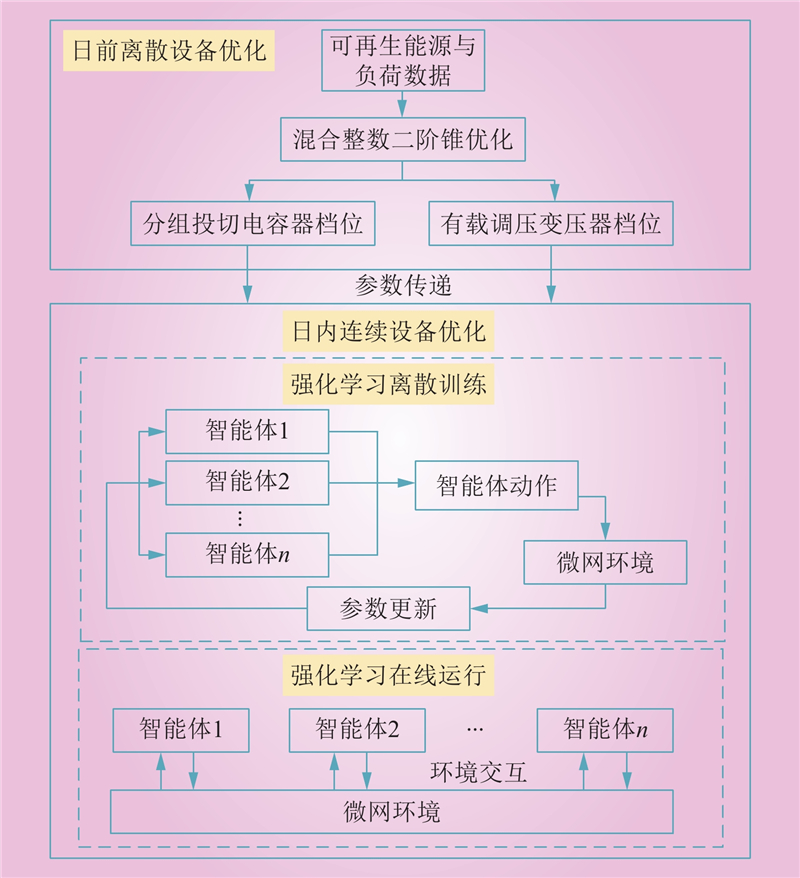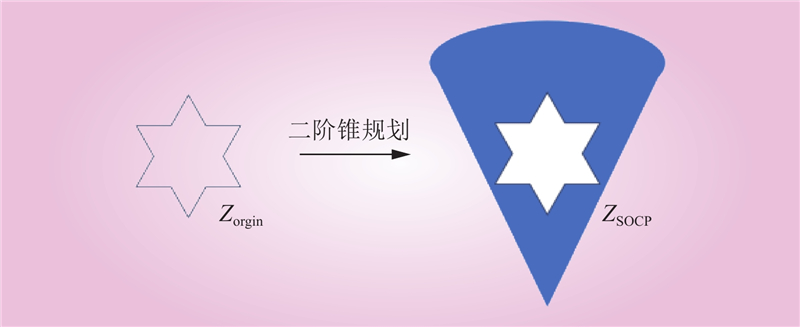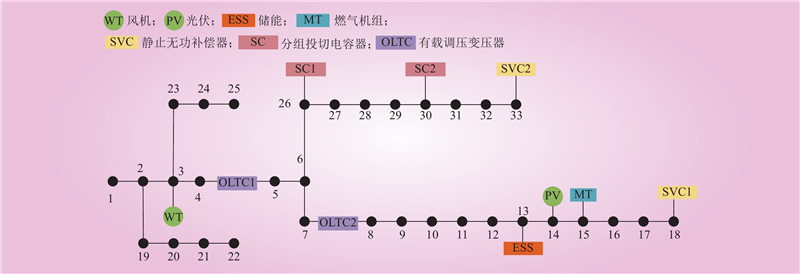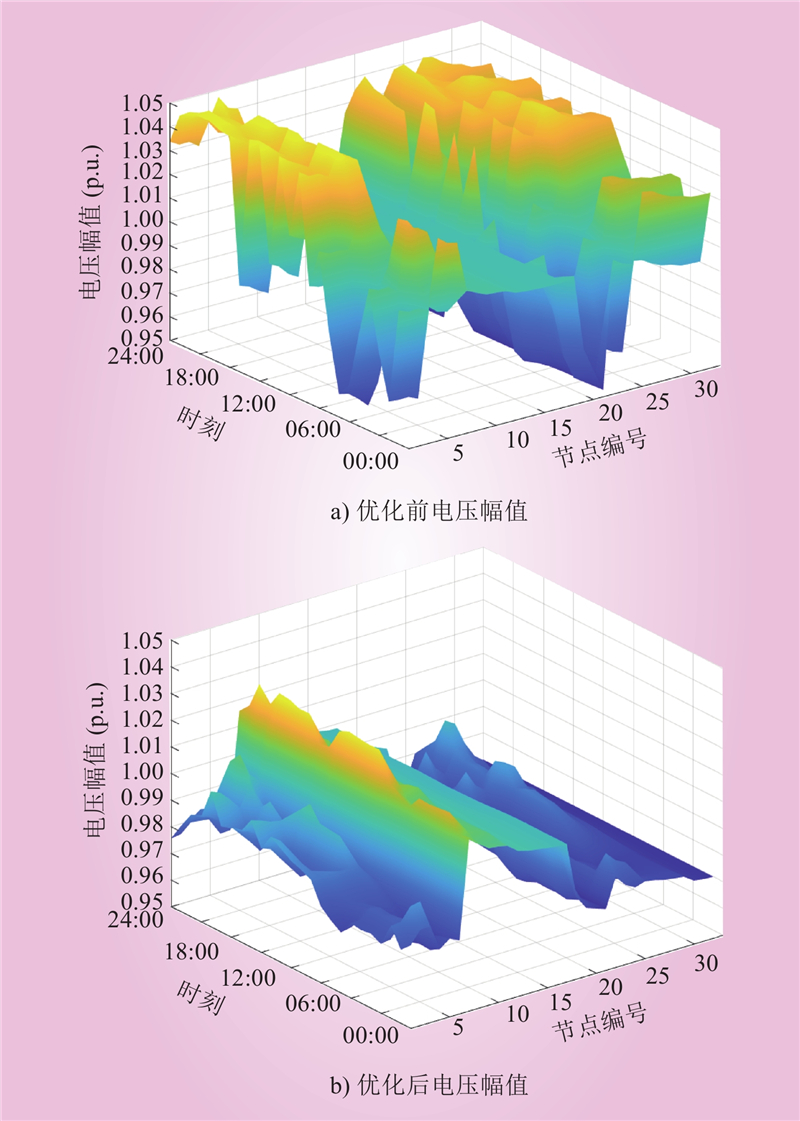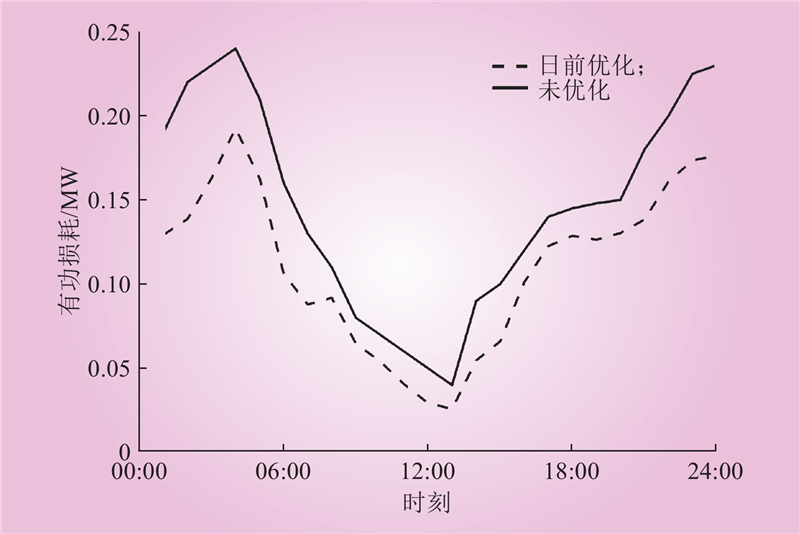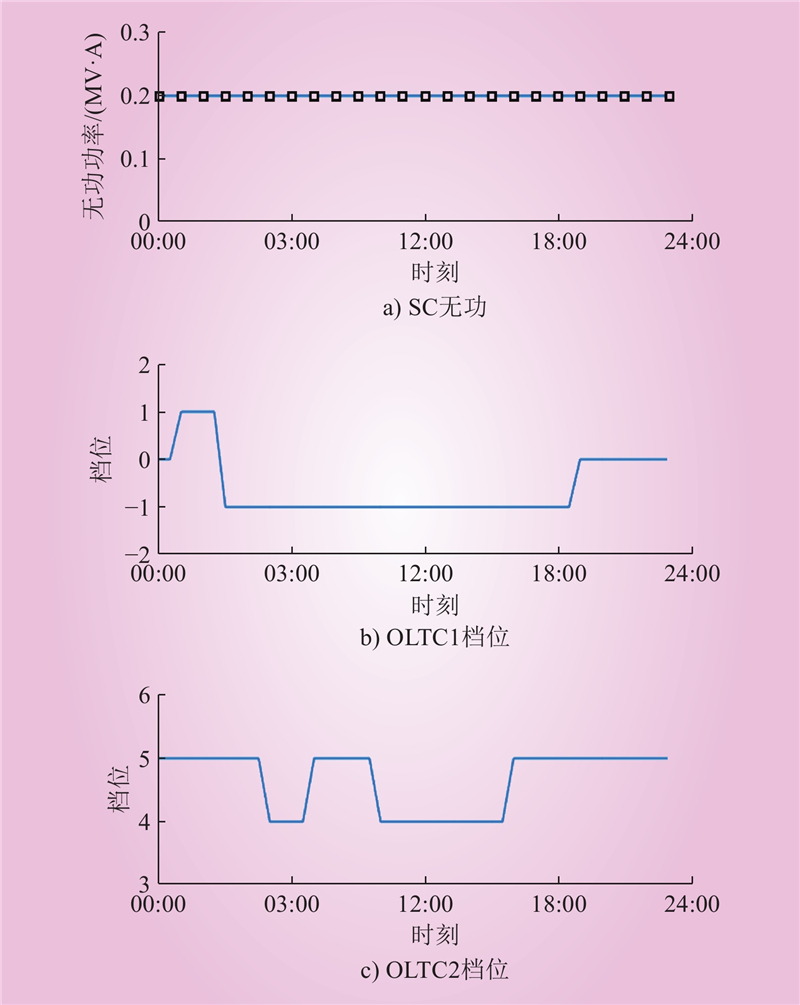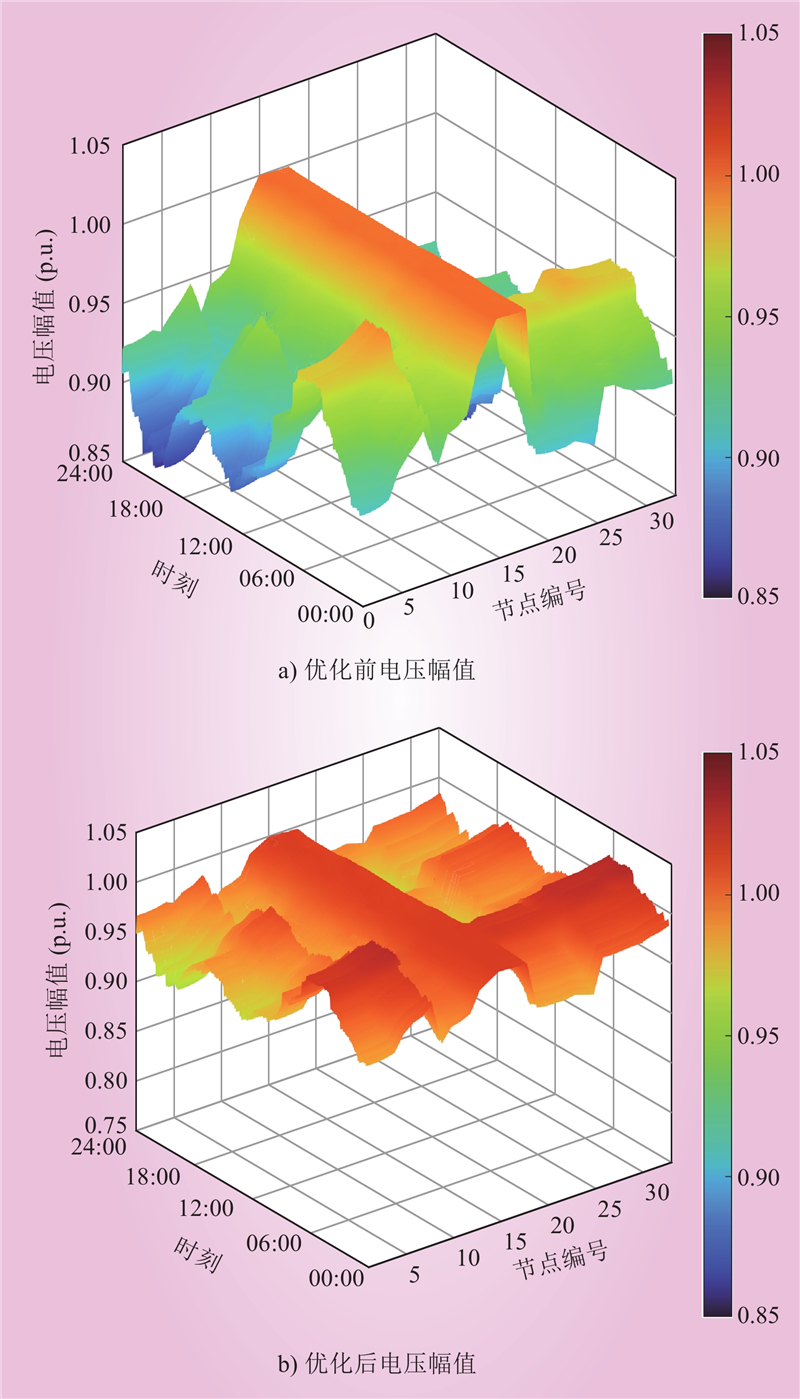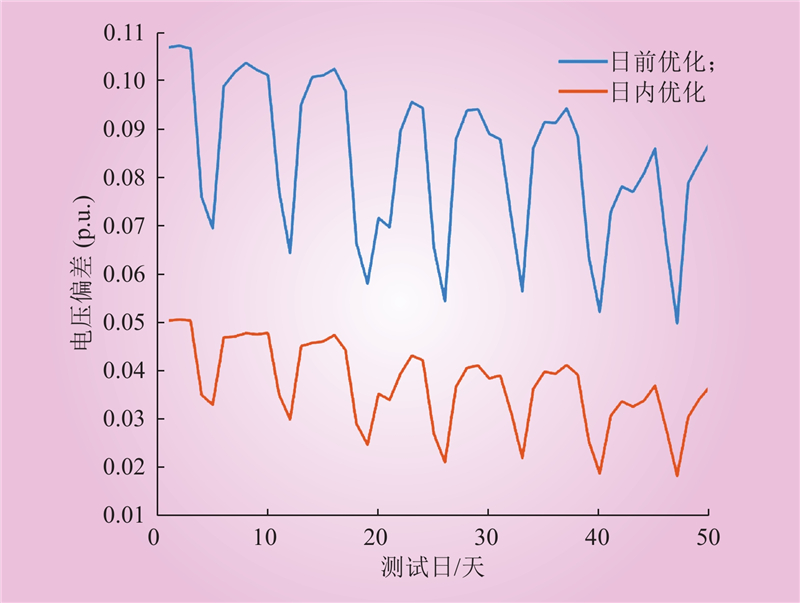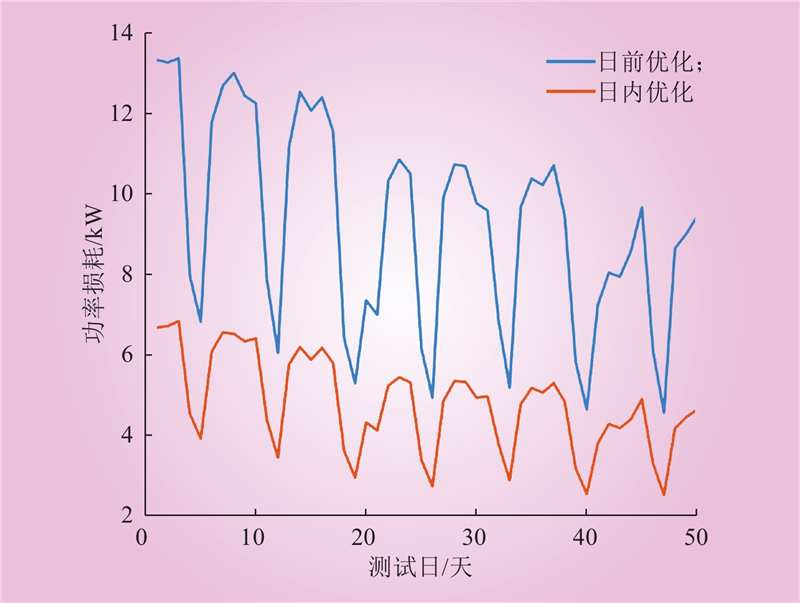| 1 |
于昊正, 赵寒杰, 李科, 等. 计及需求响应的分布式光伏集群承载能力评估[J]. 电力建设, 2023, 44 (2): 122- 131.
|
|
YU Haozheng, ZHAO Hanjie, LI Ke, et al. Carrying capacity evaluation of distribution network for distributed photovoltaic cluster considering user-side demand response[J]. Electric Power Construction, 2023, 44 (2): 122- 131.
|
| 2 |
崔茗莉, 冯天天, 刘利利. 双碳目标下区块链与可再生能源的融合发展研究[J]. 智慧电力, 2024, 52 (2): 17- 24.
|
|
CUI Mingli, FENG Tiantian, LIU Lili. Integration and development of blockchain and renewable energy under double carbon target[J]. Smart Power, 2024, 52 (2): 17- 24.
|
| 3 |
翟苏巍, 李银银, 杜凡, 等. 考虑海量分布式能源接入的配电网分布式无功控制策略[J]. 中国电力, 2024, 57 (8): 138- 144.
|
|
ZHAI Suwei, LI Yinyin, DU Fan, et al. Distributed reactive power control strategy of distribution network considering massive distributed energy access[J]. Electric Power, 2024, 57 (8): 138- 144.
|
| 4 |
王华伟, 程小虎, 赵蒙蒙, 等. 面向分布式光伏消纳的中压配电网储能规划模型和求解方法[J]. 电力建设, 2023, 44 (9): 58- 67.
|
|
WANG Huawei, CHENG Xiaohu, ZHAO Mengmeng, et al. Method for energy storage planning in medium-voltage distribution networks for distributed photovoltaic consumption[J]. Electric Power Construction, 2023, 44 (9): 58- 67.
|
| 5 |
焦昊, 殷岩岩, 吴晨, 等. 基于安全强化学习的主动配电网有功-无功协调优化调度[J]. 中国电力, 2024, 57 (3): 43- 50.
|
|
JIAO Hao, YIN Yanyan, WU Chen, et al. Coordinated optimization of active and reactive power of active distribution network based on safety reinforcement learning[J]. Electric Power, 2024, 57 (3): 43- 50.
|
| 6 |
BLETTERIE B, KADAM S, BOLGARYN R, et al. Voltage control with PV inverters in low voltage networks: in depth analysis of different concepts and parameterization criteria[J]. IEEE Transactions on Power Systems, 2017, 32 (1): 177- 185.
DOI
|
| 7 |
ZERAATI M, HAMEDANI GOLSHAN M E, GUERRERO J M. A consensus-based cooperative control of PEV battery and PV active power curtailment for voltage regulation in distribution networks[J]. IEEE Transactions on Smart Grid, 2019, 10 (1): 670- 680.
DOI
|
| 8 |
ZHU H, LIU H J. Fast local voltage control under limited reactive power: optimality and stability analysis[J]. IEEE Transactions on Power Systems, 2016, 31 (5): 3794- 3803.
DOI
|
| 9 |
冯昌森, 张瑜, 文福拴, 等. 基于深度期望Q网络算法的微电网能量管理策略[J]. 电力系统自动化, 2022, 46 (3): 14- 22.
|
|
FENG Changsen, ZHANG Yu, WEN Fushuan, et al. Energy management strategy for microgrid based on deep expected Q network algorithm[J]. Automation of Electric Power Systems, 2022, 46 (3): 14- 22.
|
| 10 |
龚锦霞, 刘艳敏. 基于深度确定策略梯度算法的主动配电网协调优化[J]. 电力系统自动化, 2020, 44 (6): 113- 120.
|
|
GONG Jinxia, LIU Yanmin. Coordinated optimization of active distribution network based on deep deterministic policy gradient algorithm[J]. Automation of Electric Power Systems, 2020, 44 (6): 113- 120.
|
| 11 |
齐韵英, 许潇, 殷科, 等. 基于深度强化学习的含储能有源配电网电压联合调控技术[J]. 电力建设, 2023, 44 (11): 64- 74.
|
|
QI Yunying, XU Xiao, YIN Ke, et al. Voltage co-regulation technology of active distribution network with energy storage based on deep reinforcement learning[J]. Electric Power Construction, 2023, 44 (11): 64- 74.
|
| 12 |
XU H C, DOMÍNGUEZ-GARCÍA A D, SAUER P W. Optimal tap setting of voltage regulation transformers using batch reinforcement learning[J]. IEEE Transactions on Power Systems, 2020, 35 (3): 1990- 2001.
DOI
|
| 13 |
YANG Q L, WANG G, SADEGHI A, et al. Two-timescale voltage control in distribution grids using deep reinforcement learning[J]. IEEE Transactions on Smart Grid, 2020, 11 (3): 2313- 2323.
DOI
|
| 14 |
刘俊峰, 陈剑龙, 王晓生, 等. 基于深度强化学习的微能源网能量管理与优化策略研究[J]. 电网技术, 2020, 44 (10): 3794- 3803.
|
|
LIU Junfeng, CHEN Jianlong, WANG Xiaosheng, et al. Energy management and optimization of multi-energy grid based on deep reinforcement learning[J]. Power System Technology, 2020, 44 (10): 3794- 3803.
|
| 15 |
WANG W, YU N P, GAO Y Q, et al. Safe off-policy deep reinforcement learning algorithm for volt-VAR control in power distribution systems[J]. IEEE Transactions on Smart Grid, 2020, 11 (4): 3008- 3018.
DOI
|
| 16 |
刘洪, 李吉峰, 葛少云, 等. 基于多主体博弈与强化学习的并网型综合能源微网协调调度[J]. 电力系统自动化, 2019, 43 (1): 40- 48.
|
|
LIU Hong, LI Jifeng, GE Shaoyun, et al. Coordinated scheduling of grid-connected integrated energy microgrid based on multi-agent game and reinforcement learning[J]. Automation of Electric Power Systems, 2019, 43 (1): 40- 48.
|
| 17 |
ZHANG Y, WANG X N, WANG J H, et al. Deep reinforcement learning based volt-VAR optimization in smart distribution systems[J]. IEEE Transactions on Smart Grid, 2021, 12 (1): 361- 371.
DOI
|
| 18 |
倪爽, 崔承刚, 杨宁, 等. 基于深度强化学习的配电网多时间尺度在线无功优化[J]. 电力系统自动化, 2021, 45 (10): 77- 85.
DOI
|
|
NI Shuang, CUI Chenggang, YANG Ning, et al. Multi-time-scale online optimization for reactive power of distribution network based on deep reinforcement learning[J]. Automation of Electric Power Systems, 2021, 45 (10): 77- 85.
DOI
|
| 19 |
李扬, 马文捷, 卜凡金, 等. 多智能体深度强化学习驱动的跨园区能源交互优化调度[J]. 电力建设, 2024, 45 (5): 59- 70.
DOI
|
|
Li Yang, Ma Wenjie, Bu Fanjin, et al. Multi agent deep reinforcement learning driven cross park energy interaction optimization scheduling[J]. Electric Power Construction, 2024, 45 (5): 59- 70.
DOI
|
| 20 |
胡丹尔, 彭勇刚, 韦巍, 等. 多时间尺度的配电网深度强化学习无功优化策略[J]. 中国电机工程学报, 2022, 42 (14): 5034- 5045.
|
|
HU Daner, PENG Yonggang, WEI Wei, et al. Multi-timescale deep reinforcement learning for reactive power optimization of distribution network[J]. Proceedings of the CSEE, 2022, 42 (14): 5034- 5045.
|
| 21 |
张兴平, 王腾, 张馨月, 等. 基于多智能体深度确定策略梯度算法的火力发电商竞价策略[J]. 中国电力, 2024, 57 (11): 161- 172.
|
|
ZHANG Xingping, WANG Teng, ZHANG Xinyue, et al. Bidding strategy for thermal power generation companies based on multi-agent deep deterministic policy gradient algorithm[J]. Electric Power, 2024, 57 (11): 161- 172.
|
| 22 |
刘一兵, 吴文传, 张伯明, 等. 基于混合整数二阶锥规划的主动配电网有功–无功协调多时段优化运行[J]. 中国电机工程学报, 2014, 34 (16): 2575- 2583.
|
|
LIU Yibing, WU Wenchuan, ZHANG Boming, et al. A mixed integer second-order cone programming based active and reactive power coordinated multi-period optimization for active distribution network[J]. Proceedings of the CSEE, 2014, 34 (16): 2575- 2583.
|
| 23 |
巨云涛, 陈希, 李嘉伟, 等. 基于分布式深度强化学习的微网群有功无功协调优化调度[J]. 电力系统自动化, 2023, 47 (1): 115- 125.
DOI
|
|
JU Yuntao, CHEN Xi, LI Jiawei, et al. Active and reactive power coordinated optimal dispatch of networked microgrids based on distributed deep reinforcement learning[J]. Automation of Electric Power Systems, 2023, 47 (1): 115- 125.
DOI
|
| 24 |
孙国强, 殷岩岩, 卫志农, 等. 基于深度确定性策略梯度的主动配电网有功-无功协调优化调度[J]. 电力建设, 2023, 44 (11): 33- 42.
DOI
|
|
SUN Guoqiang, YIN Yanyan, WEI Zhinong, et al. Coordinated optimal dispatch of active and reactive power in active distribution networks using deep deterministic strategy gradient[J]. Electric Power Construction, 2023, 44 (11): 33- 42.
DOI
|
| 25 |
张淑兴, 马驰, 杨志学, 等. 基于深度确定性策略梯度算法的风光储系统联合调度策略[J]. 中国电力, 2023, 56 (2): 68- 76.
|
|
ZHANG Shuxing, MA Chi, YANG Zhixue, et al. Deep deterministic policy gradient algorithm based wind-photovoltaic-storage hybrid system joint dispatch[J]. Electric Power, 2023, 56 (2): 68- 76.
|
| 26 |
WANG J H, XU W K, GU Y J, et al. Multi-agent reinforcement learning for active voltage control on power distribution networks[C]//Proceedings of the 35th International Conference on Neural Information Processing Systems. ACM, 2021: 3271–3284.
|



